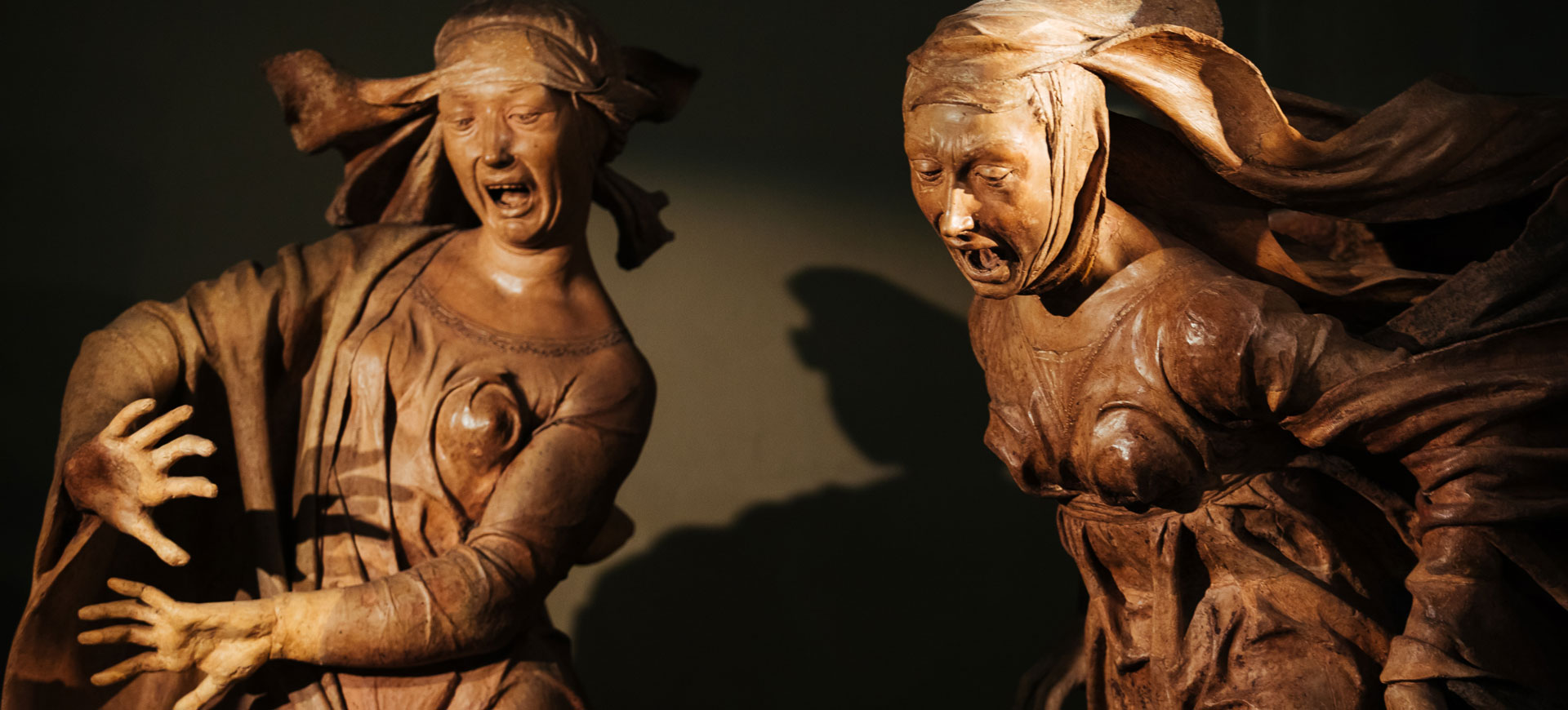
Santa Maria
della Vita
Monumental
Complex
On Tuesday, December 16th, Santa Maria della Vita will close at 6:00 PM.
Considered the most important terracotta sculptural complex of the entire Italian Renaissance, the Lamentation over the Dead Christ by Niccolò dell'Arca is a must-see for every traveller visiting Bologna. A work of exceptional expressive power that has fascinated scholars and intellectuals, captivated by its exaggerated realism, for centuries, from Carlo Cesare Malvasia to Francesco Arcangeli and Gabriele D'Annunzio. D’Annunzio visited here on 19 September 1906 and was so impressed by the work that he jotted down some reflections in his notebooks, including the expression "scream in stone", to date the most intense imagery ever used to describe the Lamentation.
Currently positioned to the right of the church’s main altar, the group – sculpted between 1463 and 1494 – was commissioned of the artist by the Confraternity of the White Penitents, founded two centuries earlier and established at the church to assist the sick and needy. Originally in polychrome terracotta, the Lamentation revolves around the lifeless body of Christ lying on a rectangular bier, a suffering and emaciated figure around which the others are arranged in a semicircle, all life-sized.
Each figure participates in the agonising grief in different ways: Mary Magdalene seems to interrupt her race towards Christ, throwing herself, petrified and incredulous, into a scream, while her robe is lifted by the wind. Mary of Cleopas shields herself with her hands in a gesture of horror, almost rejecting Christ's death. St. John, silent and sad, tries to maintain composure in his grief, in contrast with the desperate tears of the Virgin, a mother who has lost her son. Mary Salomé tries to hold back her tears by clutching her robes, and Nicodemus, kneeling near Christ's head (identified by the tongs and hammer he holds in his hands) gazes at the viewer as if to involve them in the ongoing tragedy.
The Lamentation was the first work created in Bologna by Niccolò dell'Arca, originally from Apulia, as indicated by the inscription "OPUS NICOLAI DE APULIA" on the cushion under Christ's head. The artist’s presence in the city is documented from 1462. His Lamentation is a masterpiece that immediately became an object of worship, both for its religious significance and its exceptional artistic value. A unique work, with immense expressive power and great realism, one of the most important masterpieces of Italian art.
"Enraged by pain, maddened by pain were the Maries. One, at the bedside, reached out her hand as if not to see the beloved face; and the cry and the sob contracted her mouth, furrowed her forehead, her chin, her neck. Listen to me. Can you imagine what the scream in stone is? Can you imagine, amidst the Christian tragedy, the eruption of the Erinyes?"
Gabriele D'Annunzio, "Le Faville del Maglio", 1924
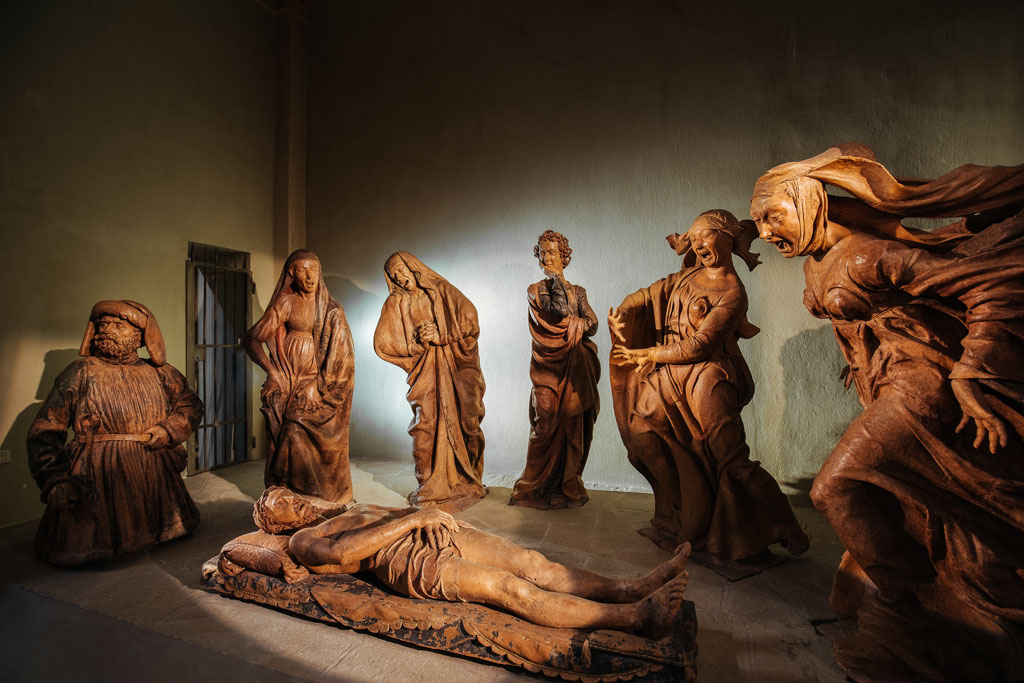
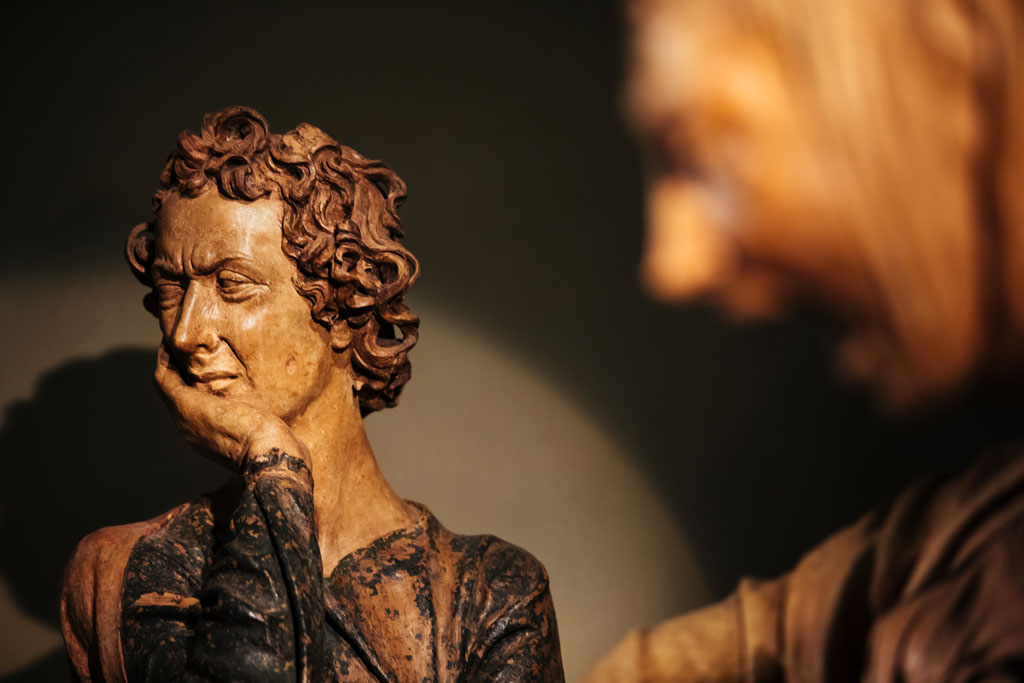
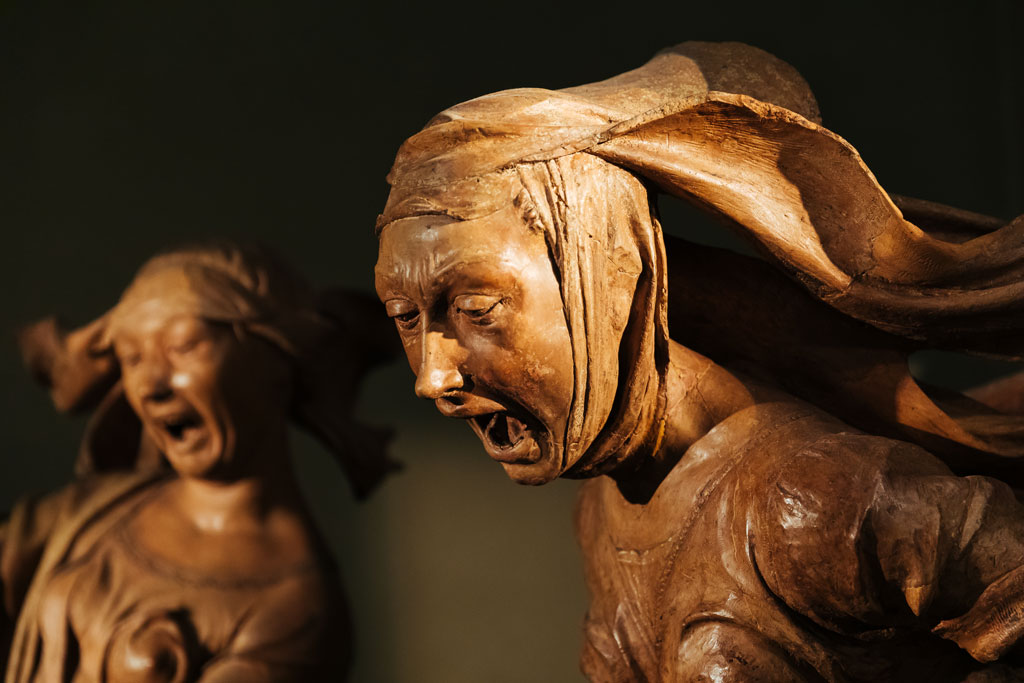
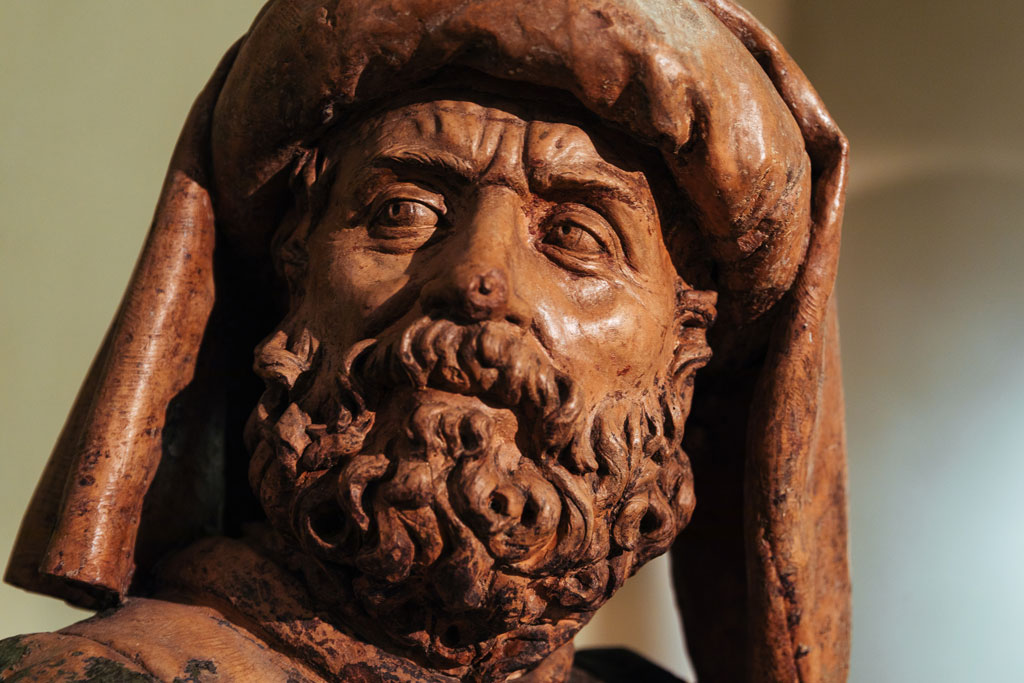
The Oratory of Santa Maria della Vita is a beautiful example of Bolognese Baroque architecture. It has a unique Venetian-style ceiling and was built in the 15th century for a religious group called the Confraternita dei Battuti. It was rebuilt between 1604 and 1617 by Bonifacio Socchi, following a design by Floriano Ambrosiani. The decorations, which use a special plaster technique, were completed in 1639. Inside, there are two historical masterpieces: a terracotta group by Alfonso Lombardi, the Transito della Vergine (1519-1522), and an altarpiece, Madonna col Bambino e Santi, by Giovanni Francesco Bezzi, known as Nosadella (1564). The decorations on the walls tell stories about the Virgin Mary and Blessed Raniero. The ceiling is decorated with three large paintings of the Madonna, with the Coronation of the Virgin in the centre (c. 1628), painted by Menghino del Brizio. On the side walls, there are statues of the saints of Bologna by Alessandro Algardi, and the floor, which was redone in the 18th century, is made of wrought stone and looks like marble.
The Oratory has been redesigned to highlight the Transito della Vergine (Transit of the Virgin), with a graphic display that lets visitors see the emotional details of Lombardi's sculptures. It also has a permanent collection of artworks from the Fondazione Carisbo Art and History Collections, including Guercino's Sybil Samia and Portia injuring her leg by Elisabetta Sirani.
There is also a multimedia room that tells the story of the history of the complex and the artistic thinking of Niccolò dell'Arca, creating a living dialogue between past and present.
Via Clavature 8-10, Bologna
From Monday to Sunday
10 AM - 6:30 PM (last entry 6 PM)
Tuesday 16 December
10:00 AM - 6:0 PM (last entry 5:30 PM)
Discover HERE the special openings during the Holiday season
+39 055 29 89 818 (for information and bookings)
+39 051 19936385 (museum reception)
Bus stop Rizzoli 11 A-B-C, 13, 14 A-B-C, 19, 25, 29, 30.
Bus stop Archiginnasio NAVETTA A (from Parcheggio Tanari).
Full ticket | € 8
Reduced ticket | € 5
Groups min. 10 persons
Ticket from others Genus Bononiae museums
6-18 years old
University students with ID (up to 26 y. o.)
Residents with ID – only “Oratorio”
Card Cultura – only “Oratorio”
Jubilee app – only “Oratorio”
Reduced schools | € 4
School groups (+ € 1 for reservation and pre-sale)
Free
Children up to 5 years old
Tour leaders
People with disabilities
Membership Card Genus Bononiae
Law enforcement agencies
Residents with ID (only Compianto – self-guided tour – no groups)
Permanent members of religious orders
Journalists with the National Order regular card (pre-registered at stampa.comunicazione@genusbononiae.it
Tourists guides with badge
ICOM members
Card Cultura – only “Compianto”
Bologna Welcome Card
Jubilee app – only “Compianto”
Reservation and pre-sale fees: Group and individual rates €1 per person
Along with the admission ticket, you will receive a card that allows you to download an audio guide on your smartphone in four languages (Italian, English, Spanish, and French). It is recommended to bring your own earphones.
Built in the 13th century, the Complex of Santa Maria della Vita originally consisted of the Hospital and Church. Their construction was commissioned by Riniero Barcobini Fasani, a Perugian who, in 1260, left his city for Bologna with a number of followers, inspired by a mission from the Virgin Mary. Upon arriving in the city with 20,000 followers, in 1261, he founded the Confraternity of the White Penitents, establishing a place for the care and aid of pilgrims and the infirm.
The Hospital, Church, and Confraternity dedicated to Santa Maria della Vita were thus born, becoming an important place of care over the centuries and a grand sanctuary enriched with splendid works of art. This includes the church's dome – designed by Bibiena, and one of the finest examples of Bolognese Baroque – and Niccolò dell'Arca’s magnificent Lamentation over the Dead Christ, created between 1463 and 1490. Often described as a "scream in stone," as D’Annunzio famously defined it, the sculptural group has influenced the history of Italian culture. Also noteworthy is Alfonso Lombardi’s Assumption of the Virgin, housed in the adjacent Oratory, inspired by a dramatic episode from Jacopo da Varagine's Golden Legend and the apocryphal gospels. Fifteen terracotta statues, slightly larger than life-size, displayed inside a high niche. They portray a Jewish priest’s attempt to profane the Virgin's body during her funeral, thwarted by the appearance of an angel with a sword.
With the Napoleonic reforms of 1796-1797, the assets of the Confraternity were expropriated and became public. Beginning in 1801, other Bolognese hospitals merged into the Grand Hospital of Life and Death until 1814, when the complex was given the new name of Ospedale Maggiore. It was later destroyed by bombings in 1943 and reconstructed elsewhere. In 2006, the complex was entrusted to the management of the Fondazione Cassa di Risparmio and, after careful restoration, reopened to the public in May 2010. The Sanctuary and its annexes constitute the heart of Bologna's historic centre, known as the Quadrilateral
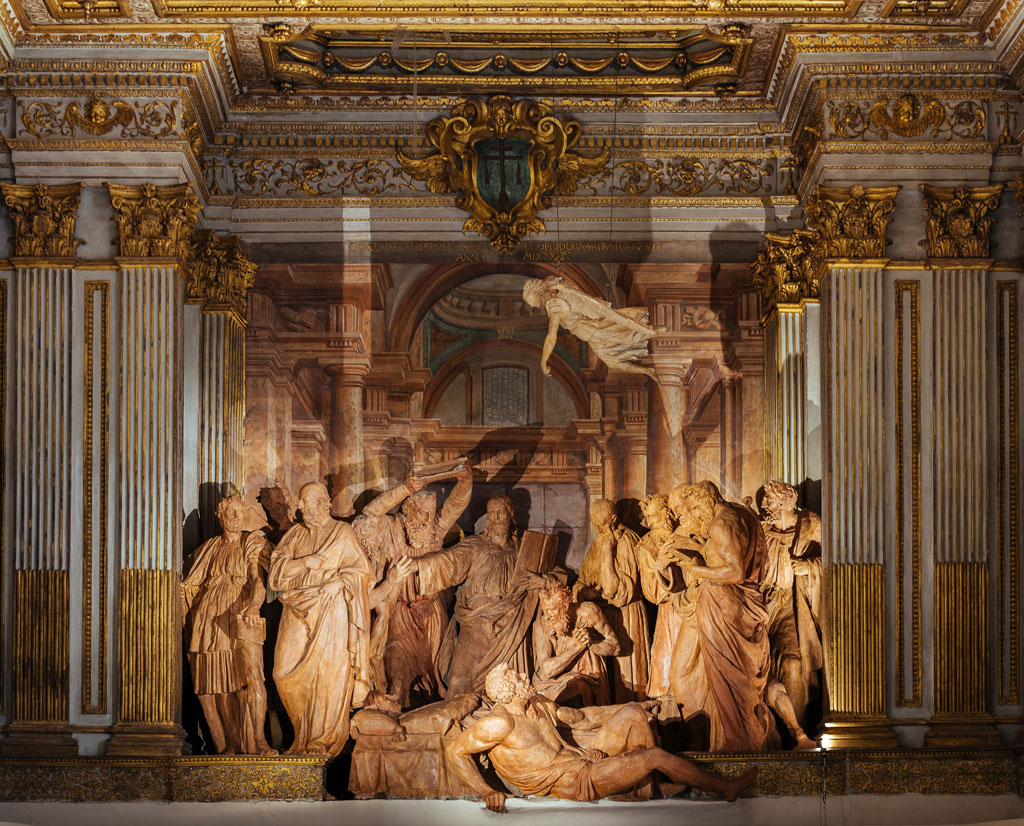
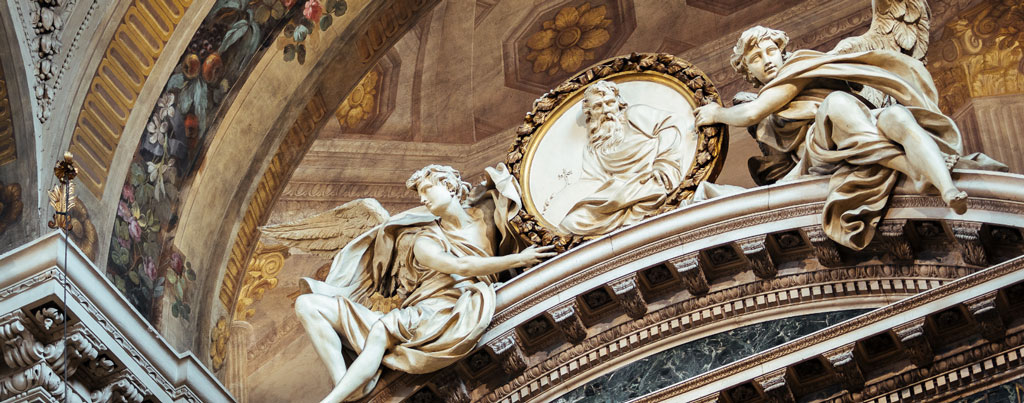
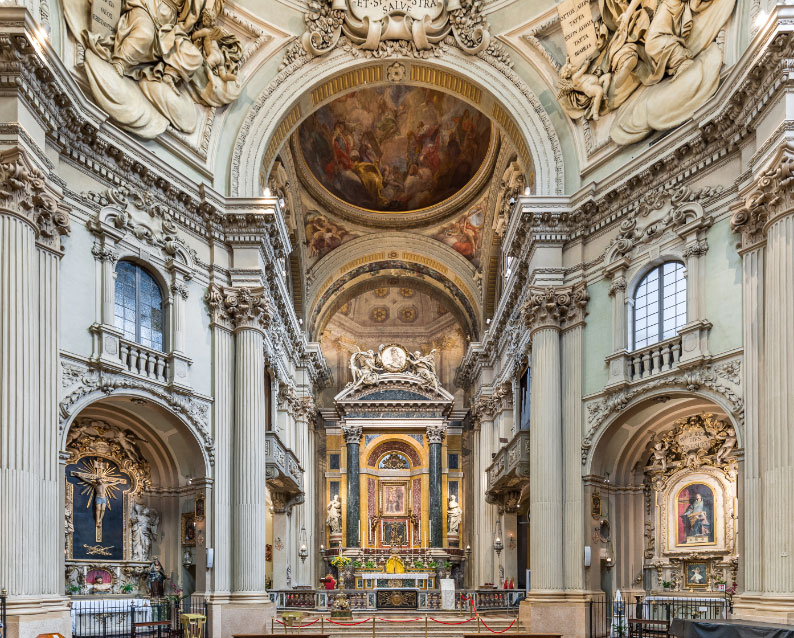
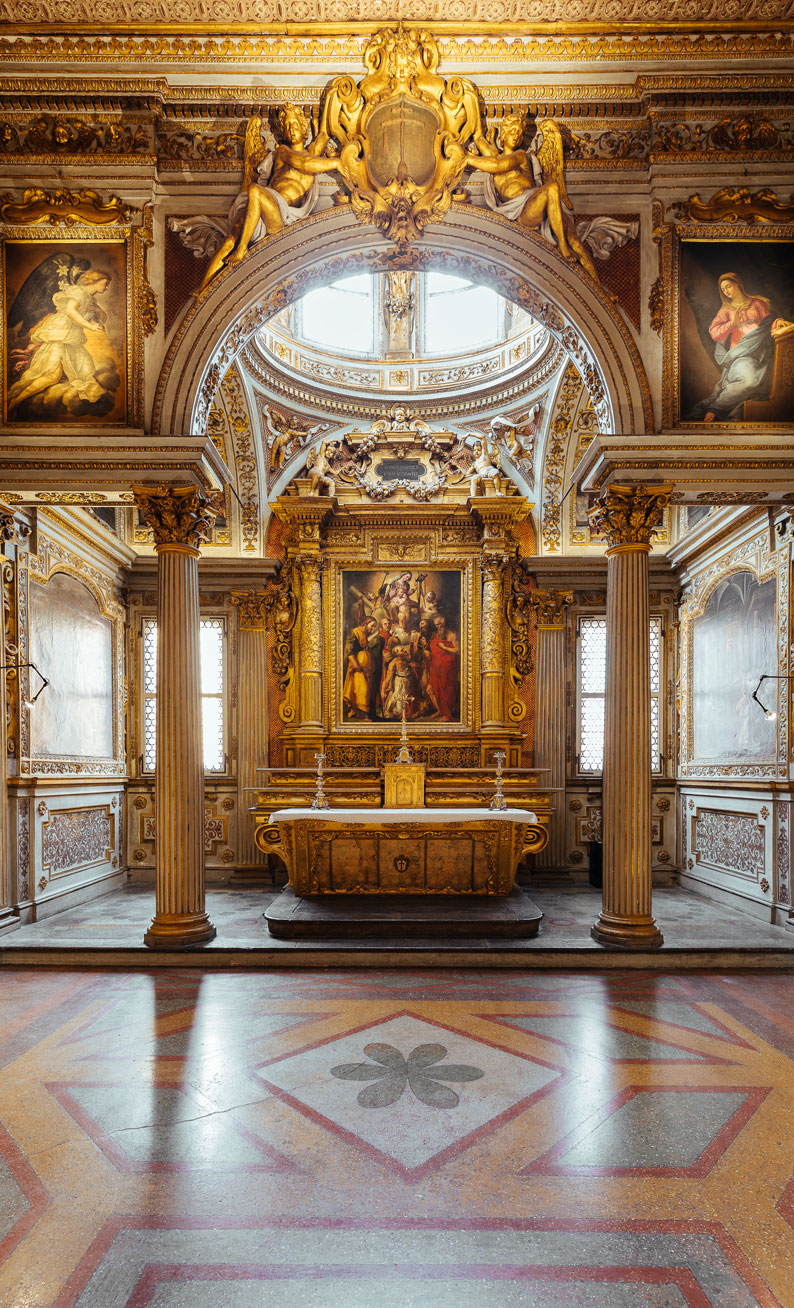
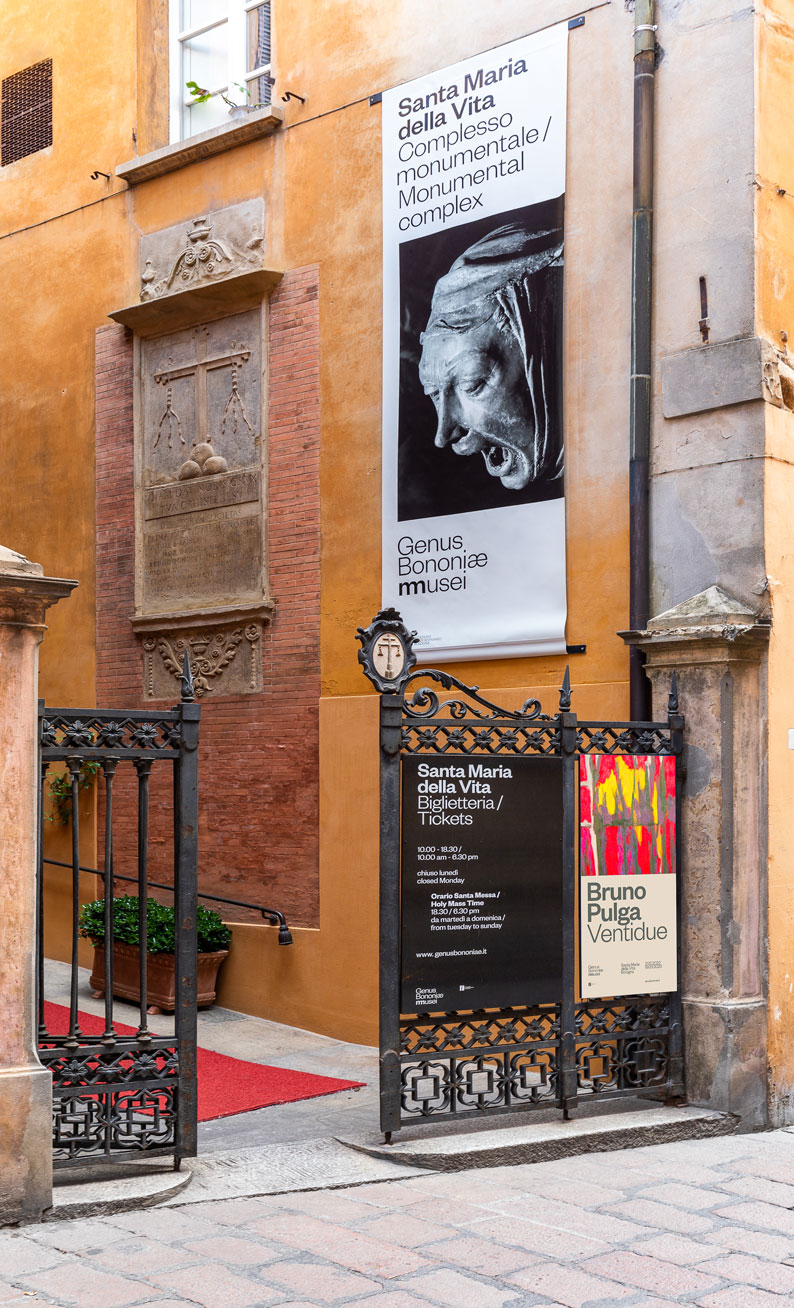
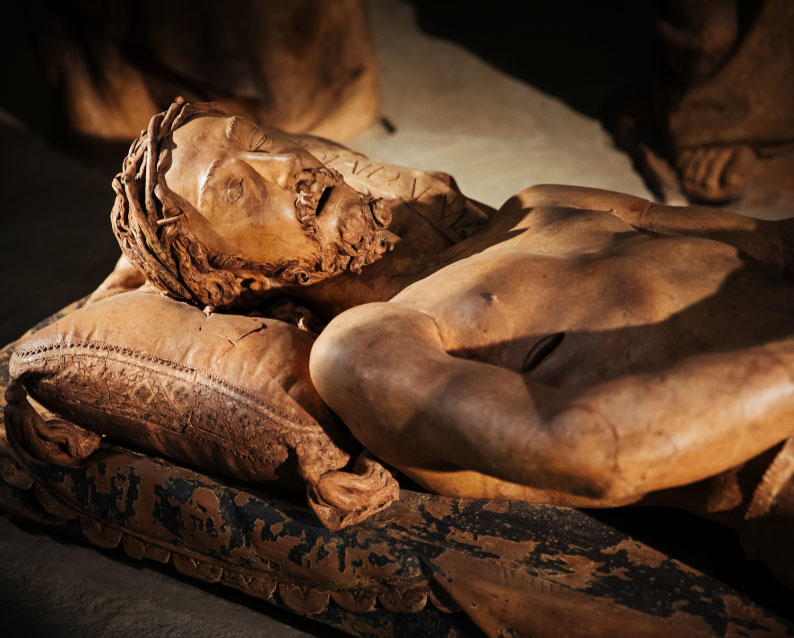
Discover all the Museums >
